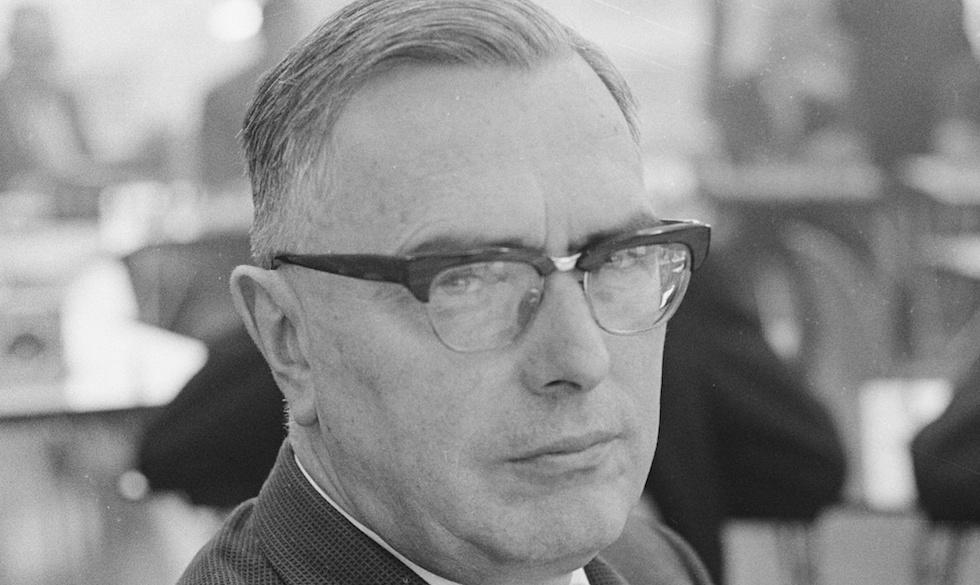
Max Euwe And The Slav Defense
In 1935 a surprising thing happened. The fourth world champion, Alexander Alekhine, widely considered a genius, lost a match to the Dutch master, Max Euwe.
Euwe was unique among world champions for several reasons. First, he was the only one who was actually an amateur -- Euwe was a mathematics teacher by profession. Every other world champion, from Steinitz until today, made his livelihood from chess.
Euwe was also the most modest and level-headed of the lot. Additionally, he was the only world champion who, of his own accord, gave his opponent a quick rematch -- which is why he remained the champion for only two years.
Euwe was one of the first opening theoreticians, carrying out deep analysis of opening variations into the middlegame. While Steinitz certainly had his original opening ideas, Lasker and Capablanca could hardly avoid dealing with some theory, and Alekhine, in his great passion for chess carried out his own original analysis,
Euwe, with his mathematician's approach, took it much further.

One of the openings that he deeply developed was the Slav Defense.
The Slav Defense had been largely neglected earlier in the 20th century in favor of the Queen's Gambit Declined (2...e6). This is somewhat surprising since 2...c6 is a very logical way of holding onto the d5 pawn, without blocking the queen's bishop. Probably the earlier masters had too much regard for White's first move advantage -- it was thought that Black should have to suffer a great deal and slowly equalize the game.
The Slav Defense was Euwe's main defense to 1.d4, and he is largely responsible for the earliest theory of the defense -- in particular, the open variations with 4...dxc4. This figured many times in both of the Euwe-Alekhine matches. Since Alekhine was also playing the Slav as black against Euwe, the opening was a major battleground for them, with the players taking on the same positions with both colors. To a large degree it helped Euwe win the match.

via Wikipedia
Very critical for Euwe's success in 1935 were the 20th and 21st games, which he won on both sides of the same position after 14 moves. Alekhine had been ahead 10.5-8.5 before these games, and suddenly Euwe had equalized the match score.
Both players were meeting the natural development of White's knights on c3 and f3 with 4...dxc4. Quickly they both settled on the line with 5.a4 Bf5 6.Ne5 Nbd7 7.Nxc4 Qc7 as best.
In the 20th game, as Black Alekhine played the move 13...Qb8?, losing time and allowing Euwe to assume the initiative, which he carried through to victory in an interesting endgame -- I annotated this game in my 2014 column.
In the 21st game the players repeated the same moves, but Euwe had an improvement ready. The saving of time proved to be crucial; Black equalized the game and after a further mistake Alekhine was forced to enact desperate measures:
Thus, largely with the help of this variation, Euwe went on to win the match.
In the 1937 rematch, already in the first game the two players yet again switched sides. This time, Alekhine, convinced by Euwe's play in the 21st game of the previous match, took up the black cause. But again Euwe was one step ahead, having prepared an improvement against his previous improvement!
After this, Euwe switched to meeting 6.Ne5 by 6...e6, while Euwe as White began playing the alternative 6.e3 in search of advantage, and a new battleground opened there, with Euwe only playing the white pieces.
In the sixth game of the match, Euwe, perhaps convinced by White's chances for the advantage with 6.e3, chose (as Black) to capture on c4 a move earlier, after 1.d4 d5 2.c4 c6 3.Nc3 dxc4. Alekhine responded by a complete bombshell.
The famous sacrifice with which he surprised his opponent was proven to be not wholly correct -- and surely at the time there were already doubts about it -- but it scared Euwe off from the Slav defense for practically the rest of the match. He switched to openings with 1...Nf6 and 2...e6.
The matches Alekhine-Euwe in 1935 and 1937 greatly enriched the theory of these open lines of the Slav Defense. The positions they reached in the matches are still being debated today by top-level players.
The deep levels of analysis and opening debates were practically unprecedented. It can be said that Max Euwe greatly developed the concept of deep opening analysis and home preparation, leading to the modern attitude towards opening preparation which developed after the second world war.

